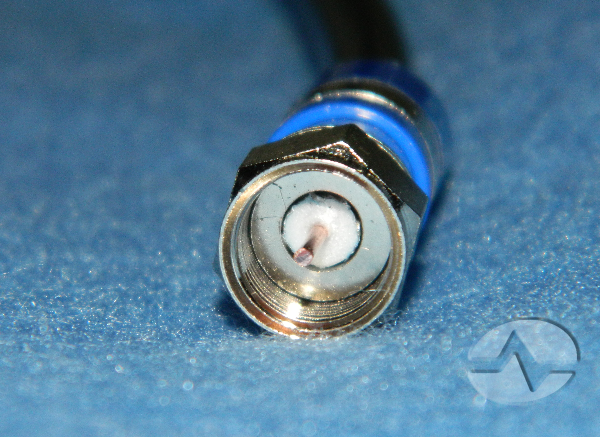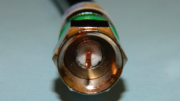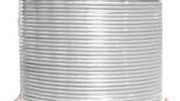Coaxial cable is one of the coolest inventions that we take for granted. When we think of wires and cables (if we think of them at all) we tend to think of them in terms of a signal wire and a ground wire. But a coaxial cable is really just a signal wire with shielding around it. It’s incredibly compact and flexible for the kind of signals it carries. Older signal cables which carried a range of frequencies used to be much thicker and more rigid, but there’s one reason the coaxial cable is so much better.
The dielectric

The dielectric is the part labeled “C” in this photo I shamelessly stole from Wikipedia. The purpose of this plastic or foam part of the cable is to insulate the center part from the outer braid. This allows the signal, which actually flows on the outside of that inner cable, to stay perfect. Using a dielectric lets us use a center conductor cable that’s much smaller in diameter. Without the dielectric, you would need a copper cable about as thick as the dielectric is in a modern cable, plus more shielding to keep it from touching the outer braid. That would make the cable a lot more expensive as well as much less flexible.
What happens when you make a hard bend in a cable
When you bend a cable to a 90 degree angle, you weaken pretty much every part of it. The outer rubber jacket stretches and could tear. The braid, which provides shielding from stray signals, will deform so that it doesn’t provide even protection.
Really, though, it’s the dielectric which takes the brunt of the damage here. As it deforms, it’s no longer a consistent insulator. Not only does this mean the center conductor cable is more vulnerable, it also means the signal could have a harder time traveling along that center conductor. This can mean signal loss and overall signal degradation.
What can you do if you accidentally bend a cable
Here’s the bad news: there’s no 5-second rule when it comes to bending coaxial cable. If you or someone else put a bend in a cable, it should be replaced. You can cut the cable before the bend and splice a new connector onto it. This will mean some loss through the connectors and the barrel connector between them, though. The best move is to simply replace the entire cable.
Yes, I get it. That seems like a pretty big reaction to a very quick mistake. But the act of bending that cable does damage it permanently. If you see a white area on the jacket that looks like it’s been strained, that’s a sign that someone has bent it at some time and tried to put it back. Trust me, the cable’s never going to be the same.
When you’re ready to upgrade the cables in your home, shop the great selection at Solid Signal! We have pretty much any cable you may want, all at the best prices. Not sure what you need? Call the experts! We’re here for you during East Coast business hours at 888-233-7563. If it’s after hours, fill out the form below and we’ll get back to you quickly.





